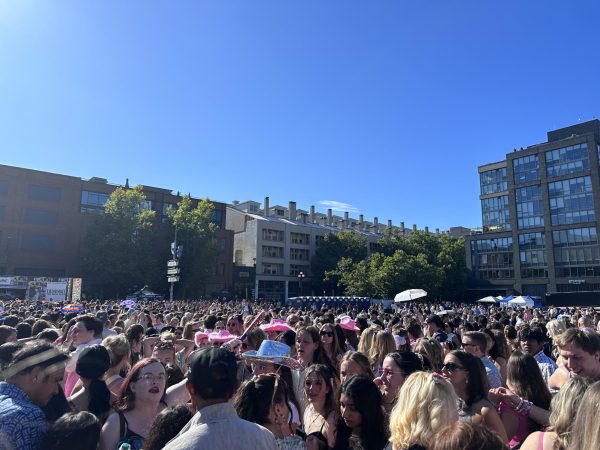It was 11:20 p.m. at Lumen Field on July 22, 2023: Fireworks were ascending, Taylor Swift was descending, and we realized, in the blink of an eye, that the concert was over. The sadness that came from the thought of not seeing Swift again in the coming years quickly turned into a question that seemed to weigh on the minds of nearly everyone in the stadium. In the hopes of making their tears ricochet, everyone wanted to know, “How can we see her again?”
While this desperation might sound dramatic, it makes sense that many Taylor Swift fans feel this way. It’s been five years since her last tour, so there is an incredible amount of pent-up demand to see her perform live. And, for fans who were lucky enough to attend her show, it’s almost impossible to not want to see her again: Whether it was going feral during the transition from “Evermore” to “Reputation,” singing every last word of “All Too Well (10 Minute Version) (Taylor’s Version) (From The Vault),” or even having conversations with other Swifties — it was an enchanted concert.
The desperation to see Taylor Swift has manifested itself monetarily. The Eras tour has gained notoriety not just for the quality of Swift’s performance, but the chaos of getting tickets to said performance as well. Ticketmaster, the platform responsible for selling the tickets, has gained a reputation as public enemy number one after millions of preregistered fans were unable to score tickets during the first ticket drop on November 15. Many hopefuls waited for hours through periodic outages and dropped connections, only to end up as they started: with nothing. As a result, many Swifties flocked to a treacherous resale market where the average ticket was priced at $1,300.

As we waited in the concert merchandise line, which we would be in for the next two hours, we started to consider the scene that lay before us: hundreds — if not thousands — of fearless fans eagerly waiting for the iconic blue crew neck. It was then we began to consider: How much do people love Taylor Swift? And how far is too far?
Soon after the concert, as Swift announced her international tour dates, even the most unobservant fans quickly noticed that prices for international dates were significantly less than those on her U.S. tour, specifically those in Latin America, where the average ticket price was $153. And with that, the champagne problem on the minds of all hardcore Swifties — how can we see Taylor Swift again? — was answered: Buy tickets to her international tour dates. These Swifties are taking Taylor’s advice to “get out of this town,” but instead of driving out of the city, away from the crowds, they are opting to fly — out of the country and toward crowds of tens of thousands of people.
Many fans have considered the implications of a Swiftie mass exodus to international tour dates and wondered if they should’ve said no to seeing Swift abroad. For the most part, fans take issue with other fans seeing her twice, as one Lakesider told Tatler, “Stop it!! Especially if you’ve already went to some of her shows prior. It’s rare for Taylor to go on international tours, so stop taking away this opportunity from other fans.” Other Lakesiders took no issue at all, noting, “Super fans. Go them,” or, “All’s fair in love and Taylor.”
However, what’s not being considered is the buying power these fans have when it comes to Taylor Swift tickets. The price of tickets during her international leg are considerably cheaper than the prices during the American leg of the tour (face value tickets in Argentina, for example, are usually no more than $180, compared to $449 in the U.S.). However, as pointed out by Vanek Smith in an NPR Podcast, a $180 ticket to the average Argentinian is proportional to a $3000 ticket to the average American — an excessive amount for a resale ticket, let alone a face value ticket. To make matters worse, as the resale market, which is only exacerbated by foreign buyers, rages on, tickets will continue to rise in price, making seeing Swift exponentially more challenging for people in countries all across the world.
All fandoms have a cost. But when Swifties take advantage of cheaper ticket prices and travel internationally to live their wildest dreams of seeing Swift perform multiple times, we need to consider: Who’s really paying it?



